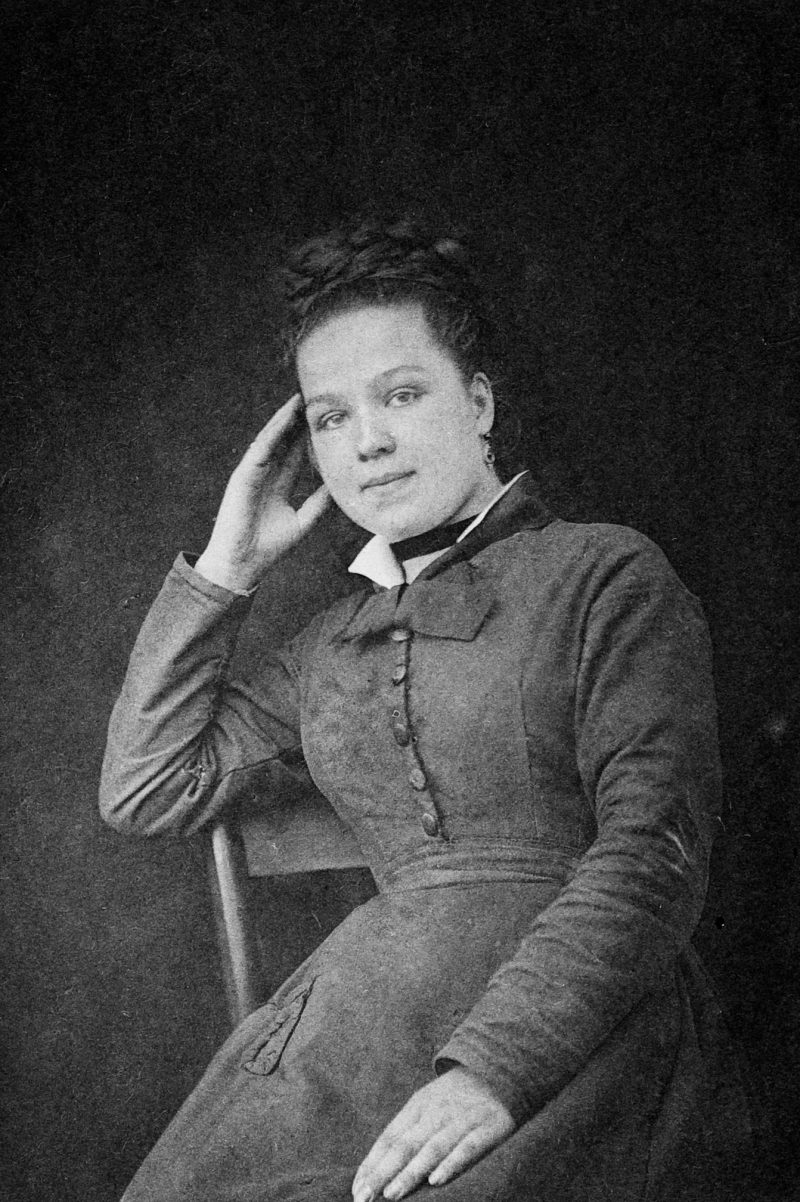During the 1870s in Paris, three young women found themselves in the hysteria ward of the Salpêtrière hospital, under the direction of prominent neurologist Jean-Martin Charcot. Over the course of the decade, Blanche, Augustine, and Geneviève became medical celebrities, their images disseminated through a series of volumes called Iconographie Photographique de la Salpêtrière. Every week, eager crowds arrived at the hospital to attend Charcot’s demonstrations, where his most famous hysterics acted out their symptoms for crowds of medical students, physicians, artists, writers, actors, and socialites. The Salpêtrière became a popular place to visit, even a destination for tourists. At the time, hysteria was a fascinating spectacle that invoked science and religion, medicine and the occult, hypnotism and theater, subject and object in ways that blurred the boundaries between research and art.
*
I first came across the Salpêtrière photographs when I was a graduate student in French at NYU. I was writing my dissertation on a late-nineteenth-century novel, The Future Eve by Villiers de l’Isle-Adam. At that time hysteria was a fashionable topic in literary theory, and was viewed, at least partly, as an illness of being a woman in an era that strictly limited female roles. Blanche, Augustine, and Geneviève, in other words, exhibited symptoms that physically illustrated their actual social conditions, bodily metaphors for their stifling social demands, aptly expressed by paralysis, deafness, and muteness.
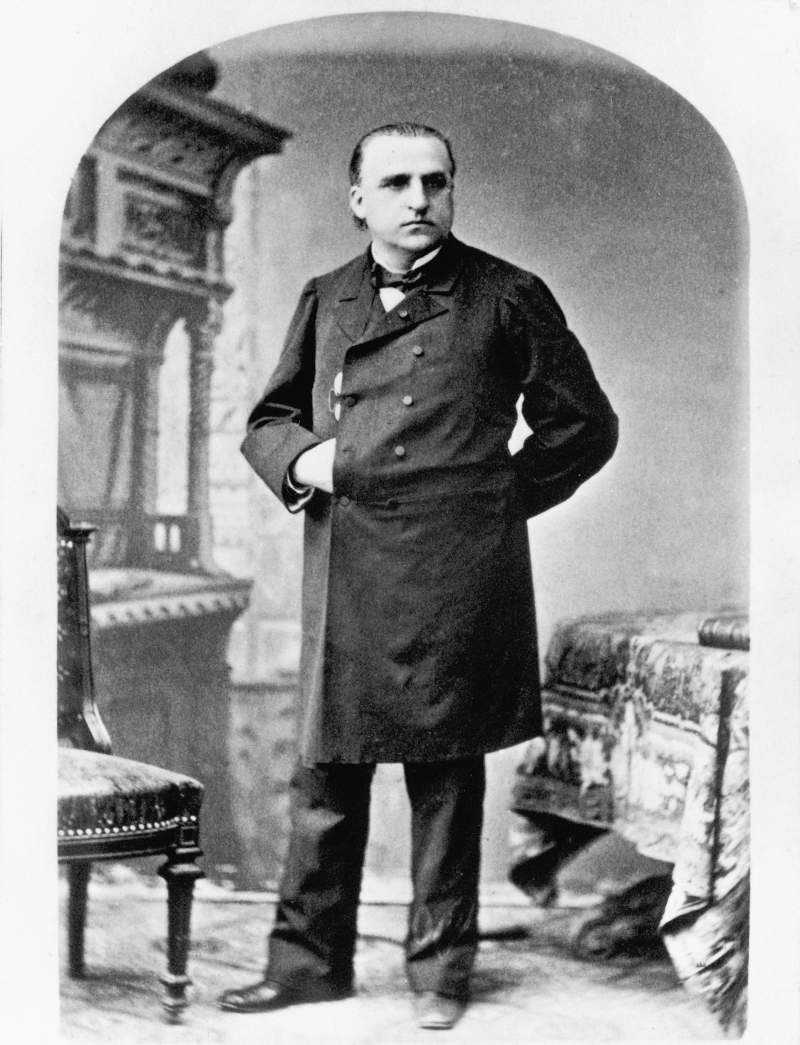
Hysteria may be an illness of the past, but the medical and ideological notions of femininity that lie behind it offer insights into the illnesses of the present and the way they are perceived. And while modern medicine no longer talks about hysteria, it nonetheless continues to perpetuate the idea that the female body is far more vulnerable than its male counterpart. Premenstrual syndrome, postpartum depression, and “raging hormones” are among the more recent additions to a medical mythology that is centuries old.
Thus I began with a preconceived notion: that hysterics were victims not only of their home lives but of a misogynist medical institution led by the tyrannical Dr. Charcot. And yet the more I read, the more I found myself admiring Charcot’s brilliance. I also became a reluctant fan of some of the members of his coterie, a group of physicians who worked with him at the Salpêtrière. Instead of a clear-cut world of exploited women and exploiting men, I entered a realm of collaboration between doctor and patient that was far more nuanced.
*
In 1852, the twenty-seven-year-old Charcot spent a year of his medical internship at the Salpêtrière Hospital. The Salpêtrière, the name of which derives from the site’s sixteenth-century use as an arsenal for gunpowder (made from “saltpeter”), became a women’s hospital in the seventeenth century, but in fact it was more of a warehouse for female outcasts: women who were mad, violent, crippled, chronically ill, mentally retarded, unmarried and pregnant, or simply old and poor. In 1680, Louis XIV built a prison on the grounds that added to this mix of unwanted women prostitutes and female convicts awaiting execution or transportation to the colonies.
The grim notoriety of the Salpêtrière was further magnified when, during the September Massacres of 1792, a mob attacked the building and women imprisoned there were gruesomely murdered. After the French Revolution, the prison was shut down, the prostitutes and criminals were sent elsewhere, and the Salpêtrière became a fortress to house elderly and insane women. Three years after the September Massacres, Philippe Pinel became chief physician; he freed the female inmates, now “citoyennes,” from their chains. The next generation of doctors continued to implement reform at the hospital, but the Salpêtrière had yet to shed its reputation as a dismal repository for unwanted and incurable women. The Salpêtrière still exists, and in a coincidence that seems oddly relevant to the story I am telling here, it is to this Parisian hospital that Princess Diana was taken after her fatal car accident.
*
Charcot called the Salpêtrière “that grand asylum of human misery.” But where others saw a professional dead end, Charcot saw opportunity. As Freud recalled more than forty years later, Charcot was inspired by “the wilderness of paralyses, spasms and convulsions” he had seen at the Salpêtrière. Ten years after his internship concluded, he returned as chief physician of medical services and began the long process of reorganizing the Salpêtrière, transforming the outdated hospital into a modern medical institution, complete with laboratories, teaching facilities, and separate wards. The large population of women, many of them suffering from disorders of the nervous system and many of them admitted for life, provided Charcot with what he called a vast “reservoir of material.” The ambitious doctor maintained that he was in possession of “a kind of museum of living pathology” whose holdings were virtually inexhaustible.
*
Charcot applied what he called the “anatomo-clinical” method, a research strategy that correlated clinical symptoms in life with anatomical lesions found in his patients after their deaths. He confronted this undifferentiated population of trembling and immobilized patients, this “pandemonium of infirmities,” as he called it, and began the long process of cataloging their symptoms and classifying their diseases. An old kitchen at the Salpêtrière was converted into a pathology laboratory equipped with microscopes to analyze brain tissue and cross sections of spinal cords.
Charcot came up with inventive techniques to document real but imperceptible variations in tremors. The “sphygmograph,” adapted from an apparatus used to take arterial pulses, graphically recorded a patient’s trembling. He designed hats with long plumes attached. The oscillations of the feathers made visible slight variations in the quivering of one nervous-system disease from the trembling of another, a whimsical solution that produced serious results.
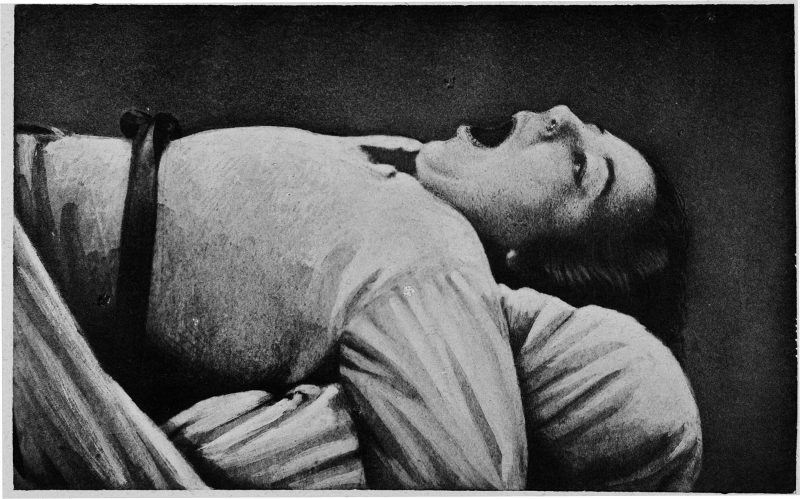
All of this data was preserved along with autopsy results, so that the patient’s external symptoms could be correlated with internal lesions in her brain and spinal cord. In this way, Charcot identified hitherto-unknown diseases and greatly added to the definitions of those already known. He discovered the precise pathology of amyotrophic lateral sclerosis (ALS), commonly called “Charcot’s disease” in Europe and “Lou Gehrig’s disease” in the United States. He contributed to the description of multiple sclerosis, Parkinson’s disease, tabes dorsalis (a form of neuro-syphilis), and locomotor ataxia, called “Charcot’s joints.”
In 1882 Charcot was awarded a new professorial chair in the diseases of the nervous system and became known as the founder of neurology. In the French press he was referred to as the “Caesar of the Salpêtrière” and the “Napoleon of Neuroses,” an image he appears to have cultivated by posing for photographs in Napoleon’s trademark position, with his hand in his waistcoat.
*
A physician named Duchenne de Boulogne undoubtedly influenced Charcot’s decision to photograph his patients. Duchenne was something of an outsider in the Parisian medical scene, a shy man unaffiliated with any institution who spent his evenings in the public hospital wards, including the Salpêtrière, observing patients and pioneering studies on the electrical stimulation of muscles. He invented a device for local faradization, a technique that stimulated an individual muscle without piercing the skin.
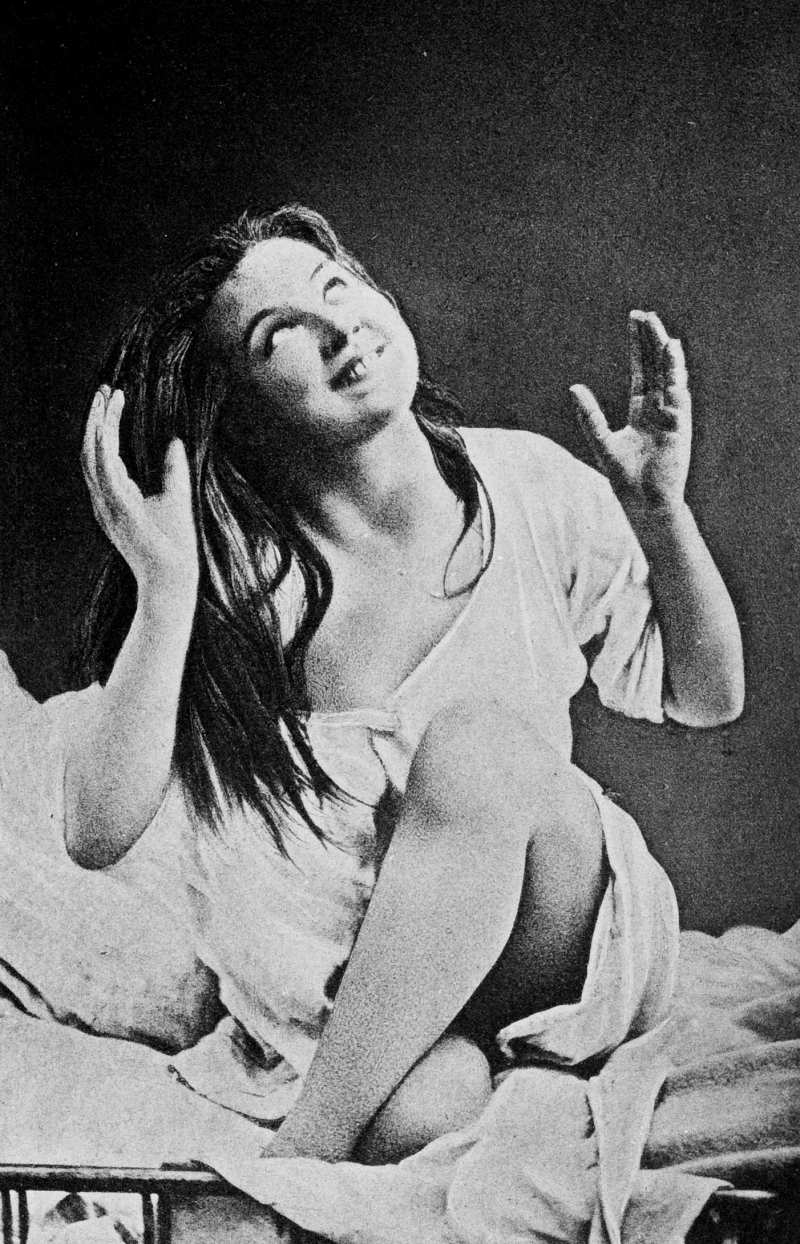
“When the women at the Salpêtrière,” wrote a physician many years later, “saw Duchenne coming along, always carrying a sort of small barrel organ, which was in fact a mahogany case with a handle that contained his famous battery and induction coil, they whispered with a sense of secrecy: here comes the little old man with his mischief box.”
Duchenne’s desire to have a permanent record of the facial-muscle faradizations led him to photography. “From 1852 onwards,” he wrote, “I had the idea of illustrating, with the help of this wonderful procedure, the specific action of individual muscles through electrical faradization…. This convinced me to learn and study the art of photography from the point of view of its application to physiology and pathology.” The resulting book, The Mechanism of Human Facial Expression, published the same year that Charcot took over the direction of the Salpêtrière, hoped to
document nothing less than the complete “orthography of facial expression in movement.” With his orthography, Duchenne had isolated the precise movements that make up facial expressions, detached from any genuine feeling. His photographs attempted to document expressions created by electrical stimulation, not by emotions.
*
As Charcot confronted hysteria, with its surplus of signs that pointed in wrong directions—its simulation of symptoms—Duchenne’s meticulous efforts to divorce the mechanism of expression from the motivation appealed to him. Influenced by Duchenne’s orthography, Charcot created his own lexicon for hysteria. And influenced by Duchenne’s work in photography, Charcot brought photography to the Salpêtrière. The year was 1875, the same year that Augustine, the patient who would become the Salpêtrière’s iconic hysteric, arrived at the clinic.
*
If Duchenne inspired Charcot to include photography in his repertoire of visual techniques, Désiré-Magloire Bourneville was the man who made photography at the Salpêtrière possible. In 1868, Charcot made the somewhat-surprising decision to select Bourneville as one of his interns, even though Bourneville was an alienist and Charcot was not interested in mental illness. He classified hysteria as a neurological disorder, not madness.
But Bourneville offered Charcot something his other interns couldn’t: he was a journalist. Among Bourneville’s many contributions to journalism was his collaboration on the Revue photographique des hôpitaux de Paris, whose stated aim was to bring together the most interesting cases found in the hospitals of Paris and illustrate them with photography, a medium “whose veracity,” wrote Bourneville, “is superior to all other genres of iconography.” It was while working on the journal that the idea of photographing Charcot’s patients first occurred to Bourneville.
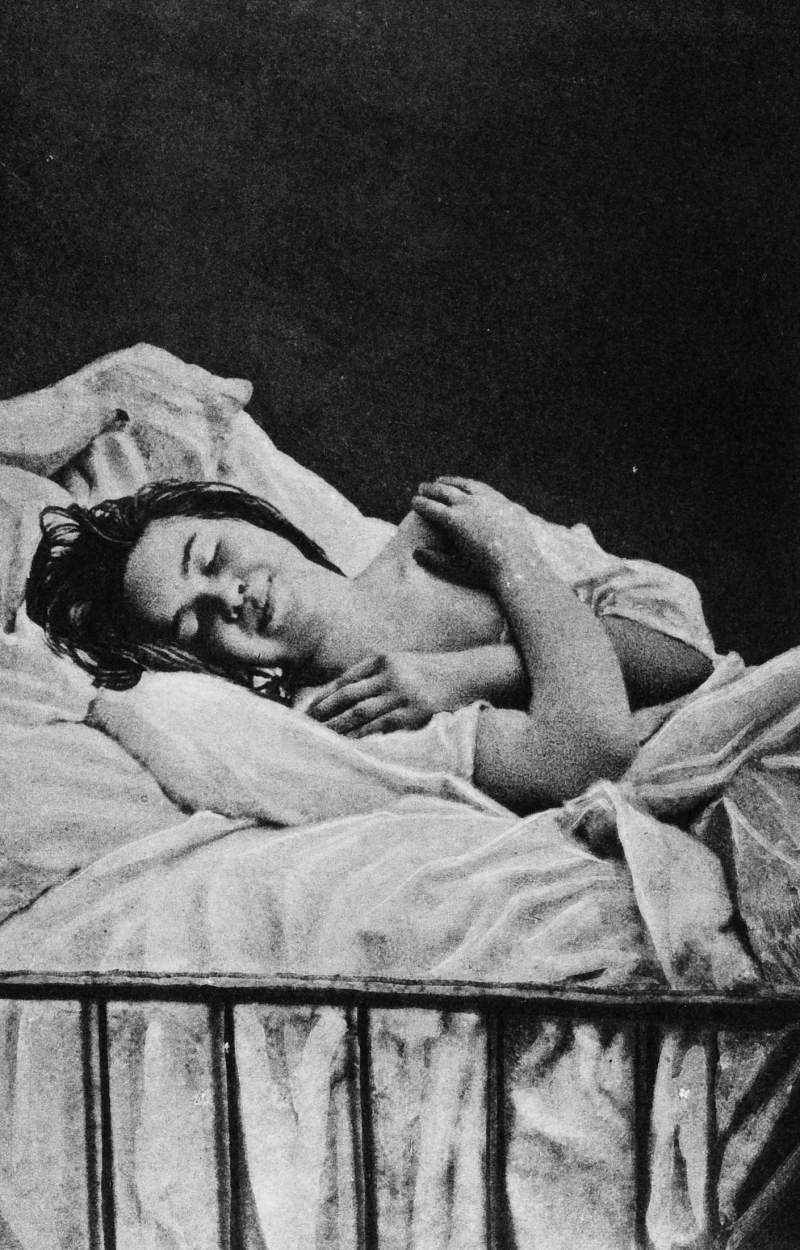
“During my collaboration on the Revue photographique des hôpitaux,” he wrote in the preface to the first volume of the Iconographie,
I had the idea to take photographs of the epileptic and hysterical patients that my regular visits to the special wards of the Salpêtrière allowed me to observe while they were in the throes of an attack. Because we were obliged to bring in a photographer from outside of the clinic, our first efforts were not very fruitful: often, by the time the photographer arrived, the fit was over. In order to bring about the goal that we were pursuing, we needed a man who knew photography close at hand, inside the Salpêtrière even, and was dedicated enough to be ready, each time that the circumstances required, to respond to our call. The dedicated and skilled man that we needed, we were lucky enough to find in our friend, Mr. P. Regnard.
Regnard began taking photographs of Charcot’s patients during the first year of his internship at the Salpêtrière, and he continued to do so until he left in the late 1870s to work with the physiologist Paul Bert at the Sorbonne. As far as I know, his career as a medical photographer did not continue after that.
*
The first issue of the Iconographie Photographique de la Salpêtrière, published in 1875, is an album of photographs. The only text consists of chapter headings that divide the book into hysterical patients, epileptic patients, and “varia,” a section of miscellaneous photographs. There are no case histories, names, or captions to tell the viewer what she is supposed to be seeing. Without labels, the pictures raise more questions than they answer. For example, there is an image of a woman asleep in the courtyard, her head positioned comfortably on a pillow: how did she end up prostrate on the cobblestones, with her pillow, no less?
*
The Iconographie Photographique de la Salpêtrière might never have developed any further if Charcot hadn’t encouraged Bourneville to publish his case histories and use the photographs to illustrate them. Under Charcot’s direction, Bourneville edited the next three volumes of the Iconographie. He included in parentheses in the text photographic plate numbers that instruct the reader when to look at the corresponding illustrations. Still, there is an odd disconnection between Bourneville’s text and Regnard’s images. Although this is partly due to the fact that these volumes were assembled after the fact, it is also due to the very nature of photography. While the text might direct us to look at a contracted limb, we inevitably look at the person attached to the limb. The photographs in the Iconographie haunt its pages, the ghosts of women who refuse to be reduced to medical illustrations.
*
Augustine appeared in the 1878 and 1879 issues of the Iconographie. The first photograph of her, “Normal State,” was probably taken upon her arrival. Unlike the other hysterics, who in their “normal state” portraits glance modestly to the side or stare vacantly ahead, Augustine looks directly at the camera, a slight smile on her lips.
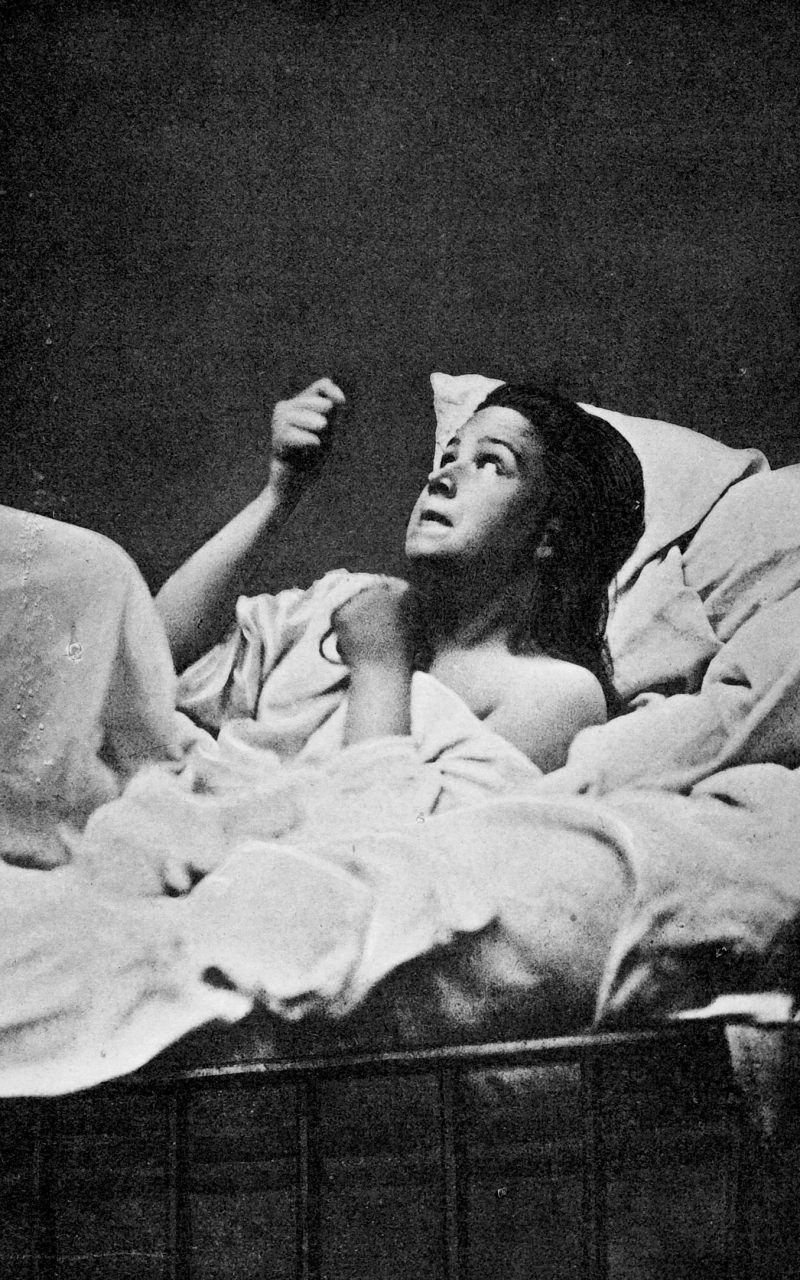
But Augustine was not normal. She was a most gifted hysteric. Her first hysterical attack at the Salpêtrière was on December 10, a little less than two months after she was admitted. By the following spring, she was afflicted with attacks so frequently that Bourneville did not bother to record the details, only the numbers: “This morning,” he wrote, “she was overcome at 7 o’clock, and by 10 o’clock we had counted 21 attacks.” The next day, “her attacks came back this morning at 4. By 11, she had already had 26.” Three weeks later, the number increased: “Between 7 in the morning and noon, 52 attacks.”
As an attack approached, Augustine felt intense pain in her right ovary that radiated down her leg. Her right ovary was also the origin of her boule hysterique, which rose through her digestive tract, reached her throat, and caused a suffocating sensation. Sometimes her tongue became immobile and contracted, its tip curled back, or thrust out of her mouth. The epileptoid phase of the attack, composed of tonic and clonic seizures, came next. These were often superficially identical to those caused by epilepsy, but they were separate disease entities. Epileptic seizures,
according to Charcot, often caused life-threatening spikes in body temperature, while hysteria did not. As she lost consciousness,
Augustine emitted a cry classically associated with epilepsy, not hysteria. The next stage of the attack, the grand movements, or “clownism,” often took the form of Augustine repeatedly sitting up and slamming herself back down on her bed. She might then execute the “circular arch,” in which she did a kind of back bend.
*
While the epileptoid and grand-movement phases of Augustine’s attacks were not exceptional, she distinguished herself from the other hysterics in her execution of the next phase: the attitudes passionnelles, or “passionate poses.” Augustine acted out a drama—her passionate poses—while she was photographed. This series of photographs became particularly famous, and, looking at them, it is easy to understand why. Regnard’s images are undeniably beautiful. The folds of the bedding and gown have an almost sculptural appearance, and her poses are theatrical. Some of the hallucinations that this series illustrates were labeled as erotic, yet the images seem remarkably chaste. In “Amorous Supplication,” Augustine looks as if she is praying rather than pleading with her lover for more, and “Ecstasy” exudes spiritual, not carnal, bliss. In “Eroticism,” she appears positively virginal.
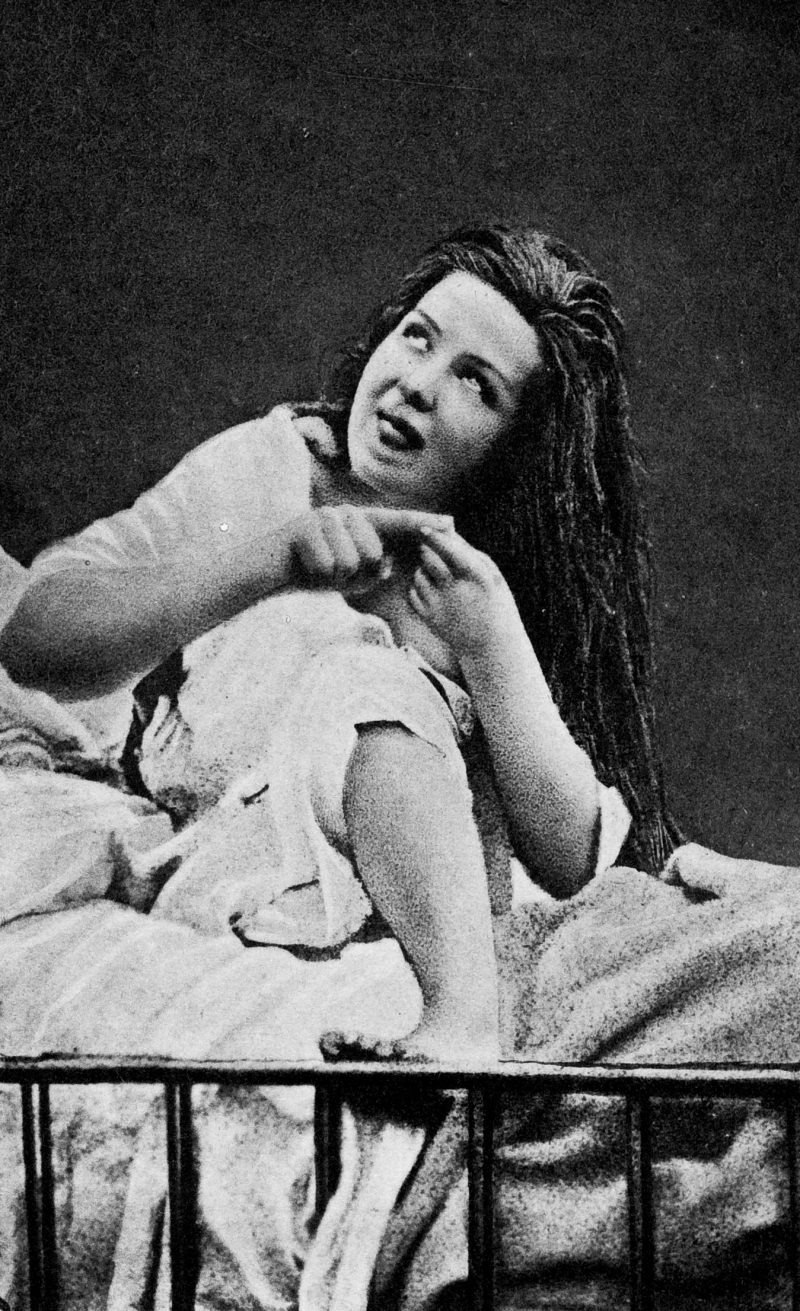
Regnard used a wet collodion process that had an exposure time of two to three seconds. While much shorter than earlier photographic techniques, this nonetheless required Augustine to be still while her picture was taken. In some photos where she was lying down, there was no problem. But many of the images suggest movement. In the photographs “Menace” and “Mockery,” for example, Augustine would have had to have held her position for several seconds in order for Regnard to have achieved such clear prints. Augustine, then, was not only the most photogenic model but also the most gifted. Whether she deliberately froze her movements to allow Regnard a great shot is impossible to know. But the end results of what happened in that studio are the extraordinary portraits we have today.
I believe that Charcot was more ambivalent about photography than is usually acknowledged. He wrote very little about it, and when he did his words are not an unqualified endorsement. Charcot’s statement “But in truth I am only there as a photographer; I inscribe what I see” is often quoted as an example of his unwavering faith in the accuracy of the camera. But it seems to me that he was instead articulating a faith in his own powers of observation, to fend off criticism that he invented hysterical symptoms. Charcot’s scientific method sought to locate the common and empirical features of a disease, while photography, despite—or maybe because of—its status as an objective medium, tends to tug in the opposite direction. Rather than seeing the clinical features Charcot had worked so hard to isolate, the viewer of these photographs is overwhelmed by an individual’s idiosyncrasies. The photographs are too alive, too inflected with personality. Photographs are like ghosts: they are not quite dead.
*
Over time, Augustine has become Charcot’s most celebrated hysteric. Later generations have turned her into an icon: an object of desire, a victim of misogyny, or a feminist rebel, depending on who is claiming her for themselves. Artists, writers, choreographers, filmmakers, and cultural critics have adopted her as a kind of mascot, projecting their own ideas and fantasies onto a teenager who spent several years at the Salpêtrière more than a century ago.
Theorists question whether or not photography is an objective documentation of reality, and question its relationship to “the real.” They point to the many ways a photographer intervenes to affect his subject matter: lighting, camera angles, and backgrounds, to name just a few. And then there are many decisions to be made about how the image is developed and printed. The photographs in the Iconographie were ostensibly illustrations of Charcot’s typology of hysteria. But as Roland Barthes noted, a photograph always carries its referent with it. We often lose sight of the fact that photographs are not simply bits of frozen reality. While these pictures of Augustine were intended to illustrate specific symptoms, they also inevitably depict the girl.

